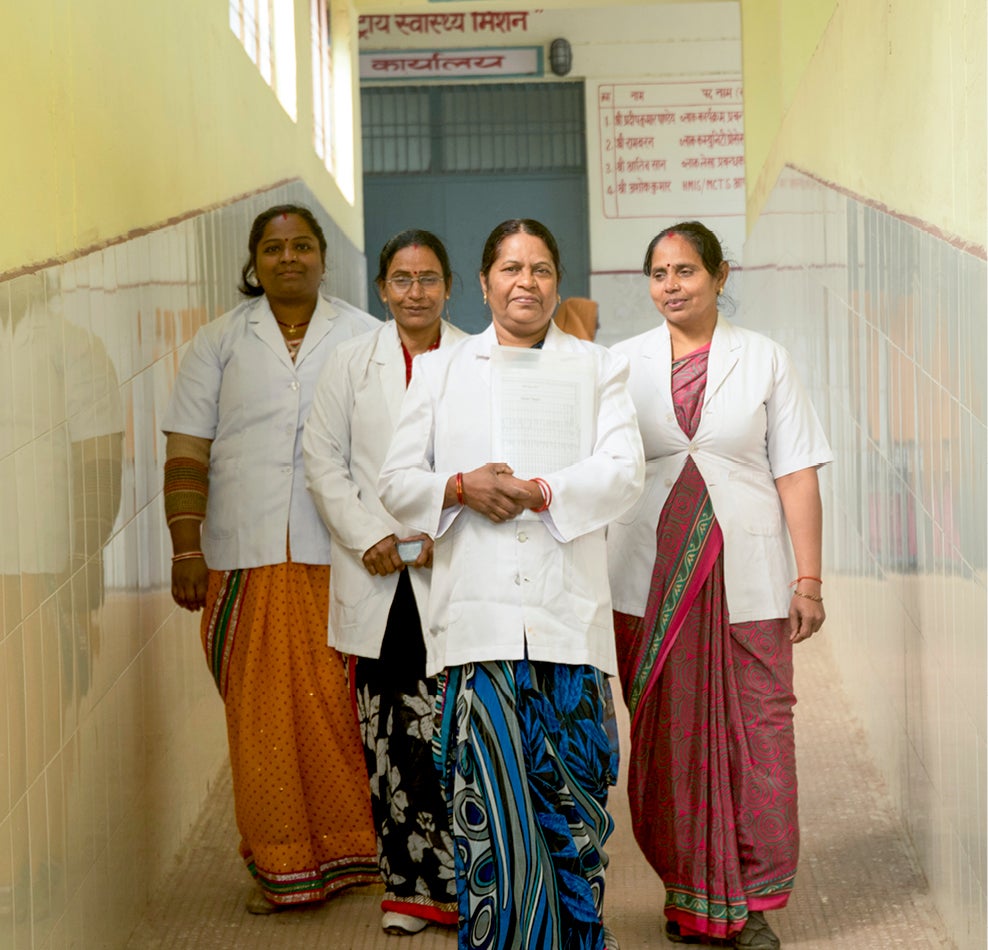BetterBirth Report Addendum: Special Topics on Complication Management
Ariadne Labs released the BetterBirth Report, a comprehensive review of the actionable findings of the BetterBirth Study, in 2019.
In 2020, Ariadne Labs undertook a secondary analysis of the study data to analyze it through the lens of maternal and newborn complications management and develop this addendum to the BetterBirth Report. The addendum includes additional findings and actionable recommendations based on the experience of the more than 157,000 mother-newborn pairs who participated in the BetterBirth study.
BETTERBIRTH STUDY SUMMARY
Ariadne Labs and global partners conducted the BetterBirth Study from 2014 to 2017 in Uttar Pradesh, India to assess the effect of a peer-coaching intervention paired with the WHO Safe Childbirth Checklist on maternal and perinatal mortality. The study was conducted in primary health centers, community health centers, and first referral units; participating women and newborns were followed up to seven days postpartum.
Ultimately BetterBirth interventions resulted in improved adherence to essential birth practices among birth attendants but did not change maternal or perinatal mortality. The study found that there is no magic bullet—no individual clinical practice correlated with better outcomes. Rather, lower mortality correlated with an increased number of completed essential birth practices, regardless of which practices were done.
Improving individual birth attendant performance was insufficient to drive the change required to save lives at scale. To deliver the comprehensive bundle of essential birth practices and achieve sustained outcomes, birth attendants should be supported by a health system that is integrated, cohesive, and seamless.
BetterBirth Data Summary
| Data Types | Number of Participants | Number of Facilities |
|---|---|---|
| Seven-day maternal mortality, perinatal mortality, and self-reported severe maternal morbidity outcomes (primary outcomes) | Mother-infant pairs: 157,689 enrolled 157,145 with final seven-day outcomes | 120 facilities: 60 intervention 60 control |
| Direct observation of childbirth care | Births observed at one or more pause points: 603 at baseline 2,563 after two months of coaching 897 after six months of coaching 2,325 four months after the end of the intervention | All half intervention, half control: 10 facilities at baseline 30 after two months of coaching 10 after six months of coaching 30 four months after the end of the intervention |
| Perinatal verbal autopsy | Of the 7,445 perinatal deaths, we identified 161 perinatal deaths (106 early neonatal deaths, 55 stillbirths) where the delivery was observed. Due to twins, the total number of interviews with mothers was 158. | N/A |
Table 1. BetterBirth Study Population
| FACILITY CHARACTERISTICS | |
| Number of facilities | 120 |
| Annual delivery load (mean, 95%CI) | 1641 (1531-1751) |
| Functional classification (n, %) Primary Health center Community Health Center First referral unit | 46 (38%) 56 (47%) 18 (15%) |
| Average distance to district hospital (km) (mean, 95%CI) | 30 (27-33) |
| Average skilled birth attendants per facility (mean, 95%CI) | 4.4 (4.1-4.7) |
| MATERNAL CHARACTERISTICS | |
| Number of women | 157,128 |
| Maternal age <=20 21-34 35-39 40+ | 2.7% 95.2% 2% 0.1% |
| Number of offspring Singleton Multiples | 99.3% 0.7% |
| Parity 0 1-3 4+ | |
| NEWBORN CHARACTERISTICS | |
| Sex Male Female Unknown | 51.8% 47.5% 0.7% |
| Low Birth Weight (2500g or less) | 30% |
| Preterm (Less than 37 weeks gestation) | 28% |

Purpose of this Report
The WHO Safe Childbirth Checklist helps birth attendants to systematically assess women and newborns for early signs of complications. Early complication identification is a critical strategy for mortality reduction, particularly in primary health settings with basic resources.
In this addendum, we look at five medical interventions—Referrals, Cesarean sections, Antibiotic use, Resuscitation, and Oxytocin administration—that offer insights into patterns of complication identification and management. We also examine the correlations between these process interventions, the characteristics of those who most commonly receive each intervention, and mortality. We hope that this report can help to identify potential areas for improvement in intrapartum and neonatal care at primary-level facilities and across the health system. ■

